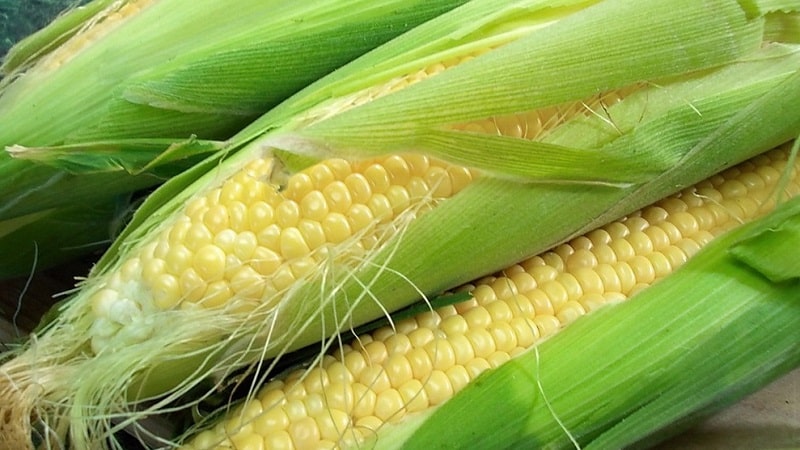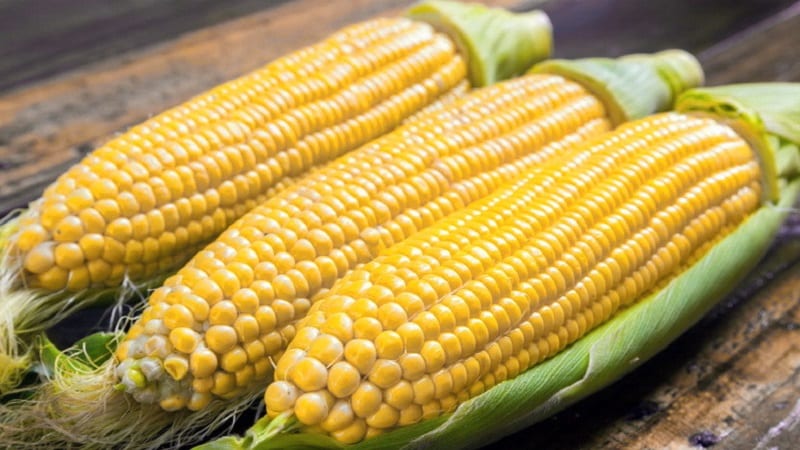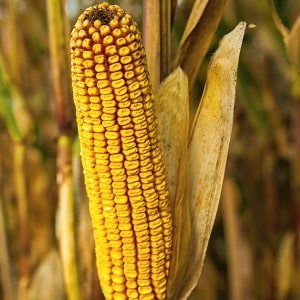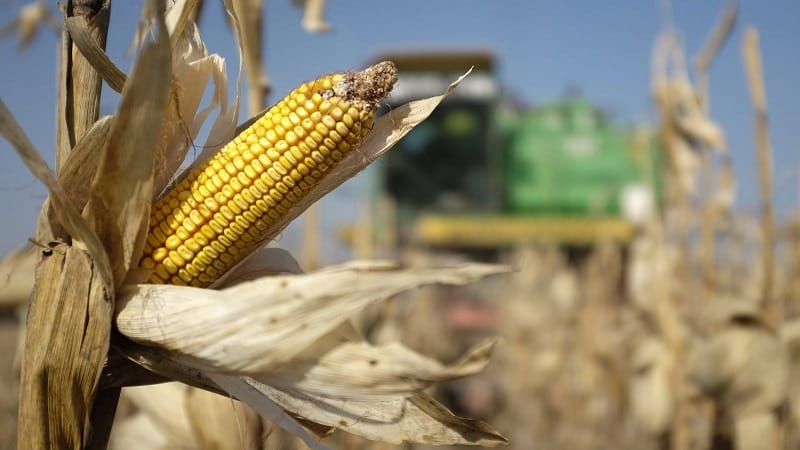Harvesting on time: when to harvest corn and how to store it after harvesting
Corn is grown in many parts of the world not only for food, but also as animal feed.
The article will tell you about the rules of harvesting and its further storage.
When to Harvest Corn
The goals for planting corn in fields and small areas often vary. In the first case, this is the industrial cultivation of a crop for animal feeding (the product is used to make silage). Owners of their own land plant crops in their dachas for personal consumption.
Harvest when the cobs contain the maximum amount of sugars: from August to October.
Often use early-ripening varieties of corn that ripen by the end of July. For drying, the crop is harvested when the stems and leaves are completely dry.
What determines the timing of harvesting?
Corn - a southern plant that came to our country after the Russian-Turkish war and grows almost everywhere today.
Cleaning time harvest depends on several factors: varieties, planting dates and region of cultivation (for example, in the Krasnodar Territory, the crop ripens earlier than in the Moscow region, thanks to the mild and warm climate).
Several dozen different varieties of corn have been developed. Among them there are early-, mid- and late-ripening ones. Each is characterized by individual timing of the appearance of the first ears. So, for the early ones this happens on the 70th day from the first sunrise, and for the later ones - on the 110th.
Cleaning directly depends on the purpose for which the crop will be used. For food it is better to use grains of milky ripeness, for making silage - milky-waxy.
How to determine when it's time to harvest corn
There are three degrees of crop ripeness: milkweed, waxy and biological.
Dairy
At this stage, the cobs contain the maximum amount of sweet white liquid. and a minimum amount of dry matter (no more than 35%).
Reference! The grains are soft, pale yellow, and when pressed, juice is released abundantly.
The panicle at the base acquires a brown tint, the leaves fit tightly to the cob.

Wax
The proportion of dry matter at this stage increases to 50%. There is practically no juice in the grains; it is converted into starch. They feel harder to the touch and when pressed they leave dents.
The color of the grains is bright yellow. The panicles turn completely brown, and the leaves are removed from the cobs without much effort.

Biological
The grains become hard, almost orange in color, and contain no more than 25% moisture.. The leaves on the cobs begin to turn yellow and dry out.
 Experienced summer residents determine the time of harvest according to certain criteria:
Experienced summer residents determine the time of harvest according to certain criteria:
- panicles on the cobs acquire a dark color;
- when pressing on the grains, white juice is released;
- the end of the cob becomes rounded and elastic.
To determine the degree of maturity of corn, it is recommended Unfold the leaves on the cob a little and check the color of the grains. It should be yellow or pale yellow, but not white. White grains indicate the immaturity of the crop. After inspection, it is important to wrap the leaves back to prevent birds from eating the crop.
The cobs ripen at different times, so those that sprout from the top of the stem are collected first.
Calendar dates for corn harvesting
The calendar harvest period begins at the end of July and ends in October..
Some gardeners rely on the lunar calendar when planting crops and harvesting crops, choosing the most favorable days for carrying out these works.
In 2020 this is:
- August: 1, 3, 7, 10, 12, 15, 17, 19, 22;
- September: 1, 2, 6, 9, 11, 13, 15, 17, 20;
- October: 1, 2, 6, 8, 11, 13, 15, 16, 20, 31.
Corn harvesting time
Corn is harvested when the kernels are sufficiently mature and have a moisture content of 25–40%..
Harvesting directly depends on the purpose of further use.
For food
The most delicious and juicy corn for fresh consumption is milk corn.. It is harvested when the grains are filled with juice and the panicles begin to darken. At this stage, the cobs contain the maximum amount of sugars and nutrients. They are collected exclusively by hand.
For silo
To use corn for animal feed, it is harvested at the stage of milky-waxy or waxy ripeness. Such grains have high moisture content and remain sweetish.
Reference! Harvesting the crop too early is not recommended. It is better to do this closer to the waxy stage of ripeness, when the grains contain a sufficient amount of nutrients.
For grain and further planting
To prepare grain, harvesting must be carried out when the cobs have a maximum dry matter content (approximately 60–70%). It is not difficult to determine the degree of readiness for harvesting: the grains become hard and smooth, and a black dot forms at the base.

For popcorn
You can't make popcorn from just any corn.. For this purpose, special varieties and hybrids are planted (Gostinets, Ping-Pong, Zeya, Vulcan, Vnuchkina Radost), the grains of which burst when heated and turn into an airy delicacy.
Collect corn for popcorn only during the period of biological maturitywhen the stems and leaves begin to turn yellow and dry out, and the panicles begin to darken.
It is not recommended to harvest popcorn in late autumn: frosts can ruin the harvest and the corn simply will not pop.
Storing cobs and grains after harvesting
Both cobs and grains that have reached biological maturity should be stored in a dry (humidity no more than 15%), well-ventilated area.
Cobs pre dried, the leaves are removed, and only then put into bags. Grains are stored in plastic containers or cardboard boxes, sometimes fabric bags are used. If the rules are followed, the harvest can be stored for up to 2 years.
Reference! Corn retains its properties and flavor better when stored on the cob rather than in the kernels.
Young corn at the stage of milk maturity cannot be kept fresh for long. Maximum: 1 week if stored in the refrigerator. The cold will slightly slow down the conversion of sugar to starch and preserve the flavor of the cereal.
On a note! You can enjoy delicious boiled corn in winter, as if it had just been picked from the garden, only in advance. freezing her.
Step-by-step instruction:
- Prepare 2 containers of water: one with hot boiled water, the other with ice.
- Dip the peeled cobs three times, alternately, first into hot, then into cold water, holding in each container for a couple of minutes.
- Dry the corn on a dry surface.
- Place in bags or wrap in cling film and place in the freezer.The shelf life of the product is from 8 months to 1 year.
The third way to store young corn is conservation. This is the most labor-intensive option, but it preserves the grain for up to 3 years. To do this, the cobs are boiled and kept in the refrigerator for 3 days to preserve the juiciness of the grains. Then they are separated from the rod and placed in pre-sterilized jars, salt is added and filled with boiled water. The containers are rolled up and stored in a cellar or refrigerator.
Conclusion
The harvest of corn directly depends on the purpose of use. For consumption, cobs are collected at the stage of milk maturity, for silo - at the wax stage, and for harvesting grain or popcorn - at the biological stage. The timing of harvest also depends on the type of corn. Proper preparation and storage of the crop will preserve all the beneficial properties of the crop for a long time.